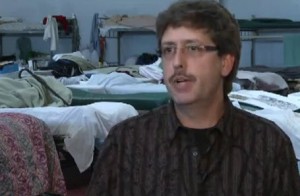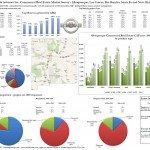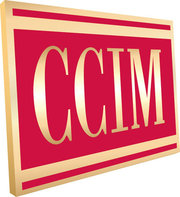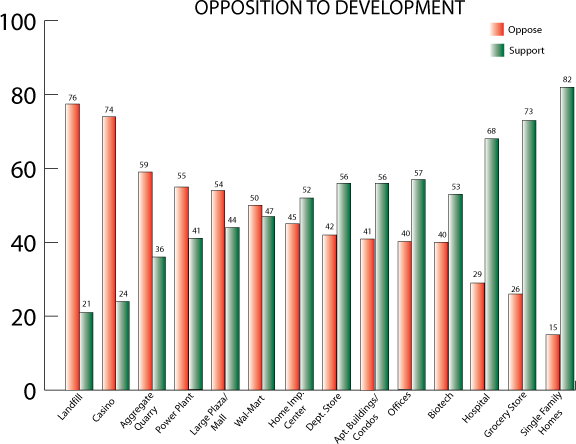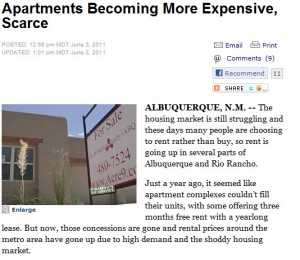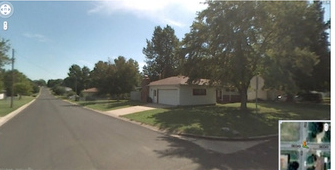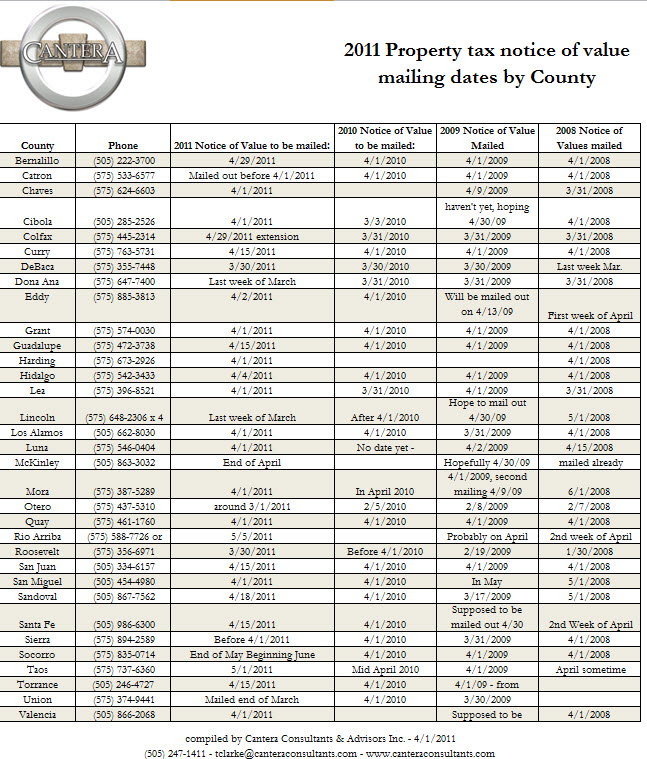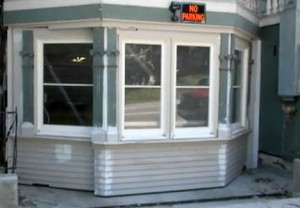RANM’s annual fall conference has a commercial focus this year – more details here.
Course: Advanced Excel Wizardry – 4 training hours
Whether you are a beginning or advanced Excel user, this course will demonstrate how you can be more efficient, productive and improve your presentations.
Topics covered in the course include:
– Formatting
– Making stunning custom graphs
– Key formulas
– Database normalization
– Using Pivot Tables
– Using Goal seek to find the solution
– Conditional formatting as a tool to make legible and cool looking spreadsheets
– Creating macros to make your spreadsheet work more efficiently
* bringing a laptop with any version of Microsoft Excel is highly recommended
An example of an apartment dashboard tool created in Excel:
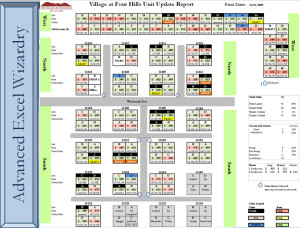
Register for this or any other course at www.canteraconsultants.com/cca2015 .
Additional information about your international award winning instructor can be found at www.toddclarke.com
Course: Ethical use of Social Networking and today’s latest technology
This day long course covers the ins/outs of navigating the social networking minefield as well as the latest in technology and how to use it to make you more efficient in your daily work.
Learn how to:
– Develop a social networking policy for you and your agents
– Determine which social networking tools will work best with your customers
– How to tap in to the Gen Y market and what they are looking for in terms of information and content
– What software and tools you can use to manage social networking
– How to engage clients using social networking
– What tools you need to take your office paperless
– The latest in market trends and how they impact your business
– The latest tech to separate the time wasters from those tools that can make you more efficient
– How to make your iPad or Droid tablet an effective marketing/presentation and business tools (including top apps)
(You can see Todd Clarke and Todd Kuhlman present over 100 mobile apps in 90 minutes at the national CCIM conference in Denver, CO – click here – https://www.youtube.com/watch?v=Wjj3bhxHS44)
One of my former students kindly offered this testimonial:
“Todd’s got his eye on the ball when it comes to technology. He knows what works and perhaps more importantly knows what doesn’t work and can help you steer away from traps.” – Richard E. Juge, CCIM, SIOR (National CCIM president 2010)
Register for this or any other course at www.canteraconsultants.com/cca2015 .
Additional information about your international award winning instructor can be found at www.toddclarke.com
Course: Confessions of a Commercial Real Estate Consultant – 8 hours of CE training
The course is hands on discovery course that covers how you can offer additional non-transaction services to your clients and shift some of your income from commissions to assignment or hourly fees.
Additional topics include:
– Where does a consultant add value?
– How to negotiate services and pricing
– Discovering hidden value in clients properties
– Common services offered by consultants
– Overview of market feasibility, site/location feasibility, financial feasibility and political/legal feasibility in the development process
– Discussion on running stakeholder meetings and/or focus group sessions
– Information resource for assignments
– How to avoid conflicts of interest
– Skill sets and experience levels required
– S.W.O.T. analysis of your potential to migrate some of your business away from commission based to pre-paid hourly engagements
Register for this or any other course at www.canteraconsultants.com/cca2015 .
Additional information about your international award winning instructor can be found at www.toddclarke.com
Property Tax update 2012 – should you protest?
I have had a number of clients ask me if we are still doing property tax protests, as they had received a handful of pieces in the mail from our competitors encouraging them to protest your property taxes, but not one from our firm.
2011 Status
Our office has only recently resolved our property taxes cases for 2011. The conclusion of these cases makes for the first time in 3 years that one year was complete before the next year started. During those 3 years we have protested over $745,000,000 in values, so from our perspective it certainly feels like most of the commercial and apartment buildings that could be protested have been done.
2012 protests
Although I am always glad to review your properties, for the most part I am recommending to my clients that they not protest their values this year. WHY you might ask? It’s simple, according to our value survey (attached), the market has started to turn the corner, and after 3 solid years of being able to lower our client’s property’s values, we think that window of time is drawing to a close.
Is there a downside to protest your property taxes every year?
Yes, when you file a protest, you open the door to an increase in value. If in reviewing your property’s info the assessor find cause to believe your property is under assessed, the can request an increase in value, and although I’ve never had it happen to me, I’ve had many assessors threaten to raise values, particularly when they feel a property owner filed a frivolous protest.
Material change in property in 2010 or 2011
I think the exception to this would be if your property has experienced a substantial physical or occupancy change in 2010 or 2011.
2013 is a reappraisal year
Although state law requires each county to reappraise its portfolio of properties every two years, many counties have gone for long periods of time with minimal increases in value.
Santa Fe County has announced that it has expanded its budget to bring all of the commercial properties to current and correct. My understanding is that Sandoval county is staffing up with the intent of revaluing all commercial properties, and Bernalillo County has indicated a similar effort.
Property Tax Lightning
As you may recall, the property tax lightning battle that is entering its fourth year, has been previously won a formal board level as well as district court, but those decisions have been appealed to the appellate court, which has not provided a ruling.
Apartment Tax Lightning
The back story for apartment tax lightning is a bit convoluted and long – so rather than bore you with the details, I can tell you that apartment owners continue to prevail in these cases – a summary of our 2011 cases can be found here – http://www.toddclarke.net/?p=1464 as well as the 2010 cases here- http://www.toddclarke.net/?p=969.
Class
If you would like to learn how our property tax system works, how to protest your own properties, or just need CE credit – our next course will be May 24th, 2012 – registration at www.canteraconsultants.com/registration
Textbook
If you don’t have time for the class, but would like the knowledge, we offer a 365 page textbook in both physical ($59 ) and digital form ($49 ). You can order your book online at www.canteraconsultants.com/bookk
App
If you are curious as to your property’s value or if you ever need to look up your property taxes from your iPhone or iPad – consider our $0.99 app – which can be found online at http://itunes.apple.com/us/app/taxessor/id419811562?mt=8 . The Taxessor App takes the values from resolved cases and matches them up to your property to give you an indication of whether it might be possible to obtain a reduction.
Resource to look up your property’s historical values
Finally, If you need to look up more than years history at a time and you are tired of multiple
“clicks” and screens on bernco.gov – try out website – www.nmapartment.com – (scroll down and look in the left hand margin for the “Lookup your property taxes” – once you enter your UPC # and go – it will pull up a 10 year history of notices of values, and tax bills all on one screen.
As always, if you need anything related to property taxes in New Mexico, don’t hesitate to email or call me
Thanks,
Todd Clarke CCIM
CEO
Cantera Consultants & Advisors Inc.
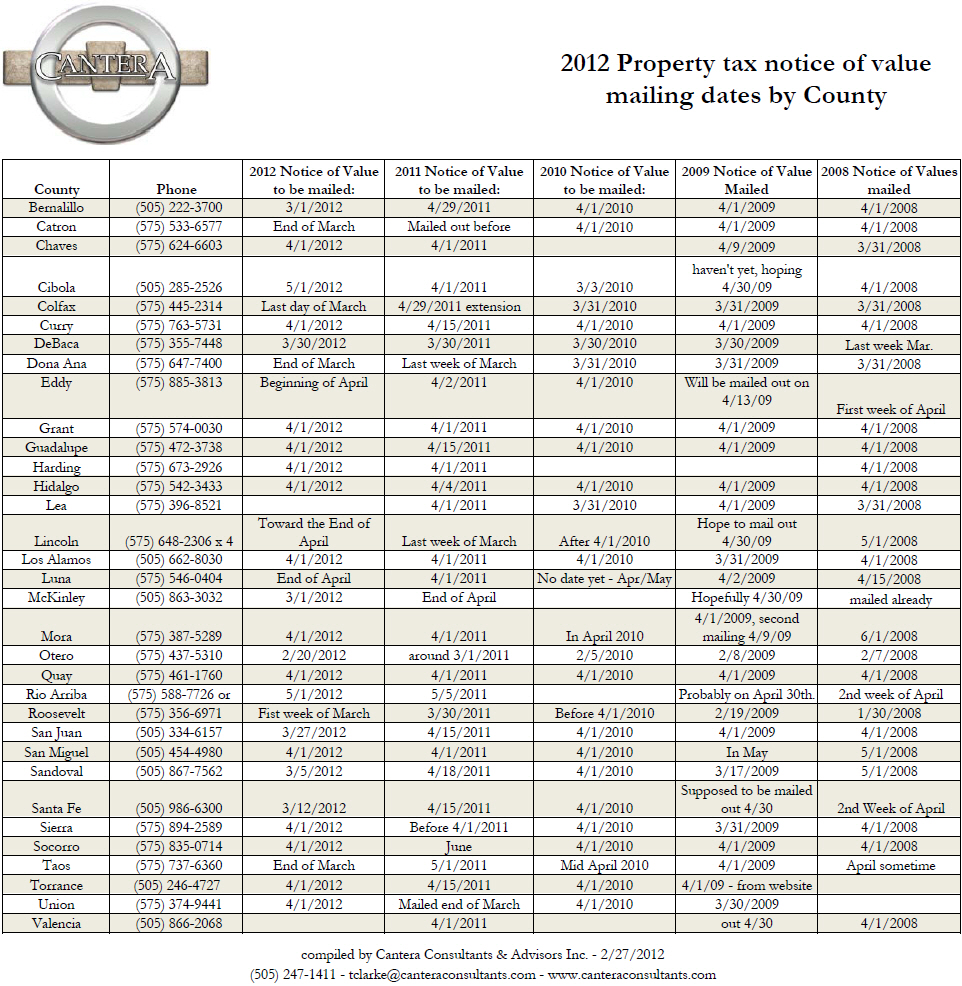
Apartment Property Tax Lightning update – 2011
On the 30th of January, 2012 our firm had a formal property tax protest hearing in front of the Bernalillo County property tax protest board.
The hearing took approximately 2 and 1/2 hours and the Bernalillo County assessor was represented by one commercial appraiser, one residential appraiser, the head of the residential department, as well as the county assessor.
We framed ourside of that case that this was not a not a decision of “value”, but rather implementation of the law and that the assessor’s office had not been executing the current laws consistently for all apartments. The assessor’s office framed their case as one of “value”, and we stipulated to the assessor’s updated value if the board found in favor of the assessors (this means that your property will receive a reduction either way, the only question is how much of a reduction).
Since we had close to a dozen apartment property tax lightning cases that had the same issue, we respectfully requested that the board here the arguments for all property’s and implement them individually on each property (this allowed the board to hear a dozen cases in 2.5 hours vs. 30 hours).
The outline document that is attached served as our narrative as we walked the formal property tax board through the following steps:
– demonstrate that your property is classified as residential
– demonstrate that your property had experienced more than a 3% increase
– demonstrate that other counties have been executing the law with no more than a 3% increase
– demonstrate that the Bernalillo County assessor’s office lost apartment tax lighting cases in 2010
– pull apart the logic underlying the assessor’s case as to why apartments should be treated different than single family homes
– pull apart the logic underlying the assessor’s case as to why apartments should be treated the same whether they are owner occupied or not
– share with the board the stipulated agreement we negotiated with the county in 2010
– remind the board of former board decisions that have found in favor of the apartment owner
– remind the board of former district court decisions that have found in favor of the apartment owner
Finally, we were able to get one of the appraisers to testify that the assessor’s office had a policy of rolling back apartments to the 3% over previous years value, but only in cases that had been previously protested, which demonstrated an uneven application of the law.
The assessor’s office presentation was focused entirely on how they had arrived at the value for the protest.
Unofficially, we have been informed from 3 different sources (including the assessor’s office) that we have prevailed in these cases, but as of this date, have not received written confirmation. As soon as we do, I will forward a copy for your files as well as an invoice showing the new value. The treasurer should then have their records updated prior to the May 2012 payment window.
If you would like a refresher on how our county got to where we are on apartment values – you can find a series of updates on our website at http://www.toddclarke.net/?s=property+tax, with the most detailed explanation at http://www.toddclarke.net/?p=969 .
Please email me if you would like to receive copies of the outline and/or the exhibits presented.
Tearing it up from the top down
Yes your eyes are not deceiving you – there is an excavactor on top of this high rise, demolishing it.
Only in China would we see something like this. More on the story at the link below.
Thanks to Gizmodo.com and its sister blog Jalopnik.com
Building a 30 story building in 15 days

Surpassing a previous record of building a 15 story hotel building in 6 days, the Chinese company, the Broad Group has constructed a 30 story building in only 15 days.
It would appear a majority of the building was built off site in panels that were lifted into place, a practice that is likely to become much more common in the near future. A 6 minute time lapsed video can be viewed here.
Thanks to Gizmodo.com for the original article.
Rent vs. Own
China Demographics
A quick update to this posting (12/19/2011): This article about China’s property bust reminds me of a saying I learned during my travels in China “In my first month, everything in know about China would fill an encyclopedia. In my first year, everything I know about China would fill a book. In my first decade, everything I know about China would fill one page.”

I thought this email chain was a perfect example of being able to take CCIM 102 market analysis knowledge and apply it to global dynamics.
Fellow CCIM instructor Carl Russel wrote me the following email about a video on China he recently saw:
Haven’t we been teaching CCIM 102 in China for a number of years? Maybe they’re not as smart as we thought. If they have so much money, why don’t they invest in the United States….oh, they already are….never mind…Is this a 102 Case Study, or should it have been? Unbelievable video non youtube.
Carl G. Russell, CCIM, SIOR
Executive Vice President
George J. Smith & Son Realtors
and my response is below:
Carl-
Thanks for sharing – very interesting story – I am adding it to my ongoing list of resource on China Demographics for an article that I have been working on for quite a while now.
The whole idea of this much housing being empty is amazing.
If you have read Greg Lindsay (Skip @ CCIM’s son) book, Aerotropolis, he mentions that there are between 125 to 150 cities in China with a population over a million people compare that with 8 to 20 (depending on if you count “cities” or “MSA’s”) in the United States. Noted author, Greg Lindsay has dubbed many of these “instant cities“.
Many of these cities were created in the last 30 years as China has pulled over 350 million people out of rural poverty into urban jobs.
Since they don’t share their census info, and measuring is often erratic at best, many scholars have spent time trying to do simple things like determine trade areas in China like this report.
Today, there are more “urban” Chinese than there are American’s (total). There are more Chinese that speak English, than there are American’s (total). There are almost as many single men in China who have no hope of finding a wife (due to the gender imbalance from the one child policy which averages 119 boys for every 100 girls) as there are men in America.
I would disagree with the story about the lack of demand for these housing units, since a majority (just under a billion people) of China’s population is still considered rural, and unlike here, needs government approval to move into the large cities. As China continues its precarious balance between keeping the urban population happy with low food prices and the rural population with high food prices (this tight rope act has not prevented tens of thousands of “protests’ this year alone), it will be improving its agricultural efficiency, moving hundreds millions into the cities to pursue industrial (or information) employment, which will provide the income to pay for the housing.
Assuming 3 people per household, 64,000,000 empty apartments would support 192,000,000 people, or about 20% of the current rural population. Looking at it that way, I feel there is a similarity between these empty cities and America’s company towns of a hundred years ago – manufactures like Ford, Cannon, and many others created towns and filled them with their employees.
That said, I know many of us who have visited China on and off over the years have been amazed and appalled at the brutal efficiency central planning.
Lest anyone get their hackles up and try to turn this a political conversation, know that like them or not, the sheer scale of what they have achieved in 30 years is unprecedented in this planet’s history, and as much as we may bemoan lost manufacturing jobs to China, those jobs have pulled hundreds of millions out of severe poverty and their pay scale is rocketing upwards to the point where it is possible that the average Chinese person’s salary could match western European levels.
Finally, I liked the end of the video – watching the agents sell the reporter – it reminded me of GlenGarry / Glen Ross (the ABC’s – always be closing).
Thanks again for sharing!
Todd
Additional resources:
Urban vs. Rural
PRC demographics – http://en.wikipedia.org/wiki/Demographics_of_the_People’s_Republic_of_China
China demographics by sex
USA cities by population
USA housing breakdown –
http://ilookchina.net/2011/03/13/western-minds-may-have-it-wrong-about-china-building-empty-cities/
Homelessness in Albuquerque – video update
We have been following Albuquerque’s homeless story for quite a while.
This video update was recently featured at the City of Albuquerque’s state of the city speech.
Robert Nelson at Metropolitan Homelessness Projected shared this update with us:
“Greetings!
I just wanted to write and share a new video that the city produced for the Mayor’s State of the City Address this past Wednesday. We’ll be reaching some milestones very soon and I wanted you to know about them. To date, 43 people have been housed in permanent housing and we’ll probably reach 50 in the next week. We’ll keep pressing onward to house 75 people by February 2012. With this rapid increase of housing, I want to also thank you for your help volunteering for us over the past few months. Because of you, we have been able to get this initiative going from the ground up – from Survey Week back in February to delivering furniture and housewares to those who were newly housed to the ongoing conversation on how we sustain housing for our clients. Thank you.
The link below is a video not only of the initiative and where we’re headed, but it also includes some of the stories of the people that have lived on the streets for years and finally moved into housing. Please share this video with your family, friends and colleagues and help us spread the word about our mission to end homelessness. Hope this message finds you well and thank you again for your support.
Robert Nelson | Metropolitan Homelessness Project”
Aerotropolis interview now available on video
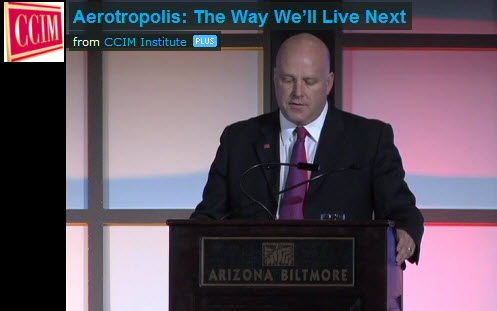
CCIM has just released the video interview with Greg Lindsay, author of Aerotropolis: The way we will live next from the CCIM Live 2011 conference held in Phoenix last month.
Earlier this year I wrote my review of this fabulous book which can be read here.
Greg’s powerpoint webinar from August 2011 is available at the CCIM website.
Moment of NM Zen
I wanted to share this stunning video with you – this is one of the many reasons New Mexican’s love New Mexico!
Homelessness in ABQ update
 The Albuquerque Journal has an update on the homeless survey that was performed earlier this year.
The Albuquerque Journal has an update on the homeless survey that was performed earlier this year.
As you may remember, I participated in the survey earlier this year, and was dumbstruck by the stories the individuals I met shared.
Although the focus on the article is about one individual who has made it into housing, then fallen out, and is working to get back in, the part of the story that left me the saddest was the number of people who have died since we surveyed them.
Those of us who own housing, who work in the housing industry must to more to help initiatives like the City of Albuquerque’s Albuquerque Heading Home as well as non-profits like Metropolitan Homelessness Project and Joy Junction to eliminate homelessness.
(BTW, I should mention that Mayor Berry received the Humanitarian award for his dedication on this issue. Having been on his team, I can tell you his desire to eliminate homelessness involved a lot more than the camera time many people might have seen and the survey of the homeless quickly turned into an emergency plan that the Mayor and City Councilors funded to get people out of the sub freezing temperatures and in shelter).
Valuation survey for NM Commercial Real estate released.
Cantera Consultants & Advisors has just released its 2011 value survey for NM Commercial Real Estate. The survey reflects the collective wisdom of industry professionals in NM.
Although Cantera uses the survey primarily for the benefit of it’s during property tax protest hearings, the survey has become staple in the commercial real estate market and is widely used and quoted by many of the brokerage, appraisal firms and county assessors in NM.
The most interesting trend reported in this year’s survey is the indication that most of the commercial property types have turned the corner on decreasing values as CAP rates have started to decrease (slightly).
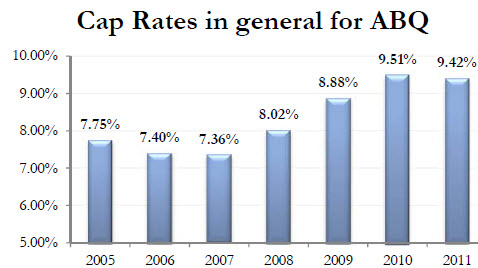
Tomorrow’s edition of the Business Outlook in the Albuquerque Journal will highlight information from the report.
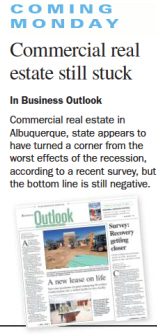
Last year’s survey results can be found here.
The 2011 value survey can be found CCA-Survey-10012011-v10.
Marketing using Social Networking recap
What did you miss last week at @ccim live? This session on how to develop a marketing strategy 4 social networking co-taught with Bill Risser
Click here to see the video overview and Prezi presentation.
A special thank you
to my CCIM CCR Study session students who obtained their designation in 2010 & 2011 – they gave me this photo – very kind and appreciated!
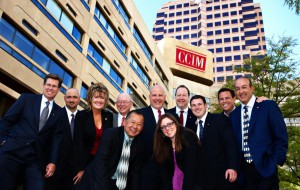
In this photo: Tom Jones, Sean McMullen, Rose Cabezut, Jerry Cass, Tuan Van Hyunh, Todd Clarke, Lia Armstrong, John Shepler, Tom Franchini, Rob Powell and Michael Contreras, all CCIMs!
Who opposes development?
As always, I am astounded at the amount of information available on the internet. Recent case and point – fellow Twitter, Patrick Fox @pffox send me a link to the New Saint Index , which tracks opposition to real estate projects.
What an amazing resource!
While landfills and casinos continue to be unpopular with neighborhoods, the opposition to WalMart has reached a tipping point where those in favor and against are almost even. (As an interesting aside, one of my favorite authors, Marc Levinson has just released a new book titled “the Great A&P and the Struggle for Small Business in America” which covers the opposition to A&P markets which was the largest retailer in the early 1900’s)
I also appreciate how the index breaks down the demographics of each product type – like supporters for grocery stores (mostly male 21 to 45, who rent and have some college and a lower income) vs. opponents (mostly female 45 to 55, own their home, high income).
QR Codes in Real Estate – around the world!
As reported in our sister blog, Todd’s technology Corner,

Having long written about the benefits of using QR Codes, imagine my surprise when I came across this real estate sign in Kyoto that included a QR code!
Ahh Ahikabarra
CCIM 102 Tokyo – Kampai!
CCIM Live and Frank Lloyd Wright!
CCIM Live update – Aerotropolis webinar now online!
Last week I had the pleasure of introducing and interviewing Greg Lindsay, author of Aerotropolis. CCIM has just posted his webinar live.
Tapping into people’s memories as part of your social networking strategy
OR, using Groups effectively on Facebook.
As someone who has covered, spoken and taught courses on social networking, I can tell you this the fastest evolving part of the internet today. Facebook membership is rumored to be over 750 million people, or 20% of all of the business people on the internet today.
During the last few years I have seen mildly ineffective to downright disastrous uses of social networking, and the successful uses are fewer and far between.
Today I would like to focus on one of that success by focusing on a local Facebook group page that grew its membership from 30 to 15,000 and experienced over 40,000 posts in one weeks time.

The group Remember when in Albuquerque… had a simple concept – encourage local Albuquerque’s to share their memories of by gone places, people, and events.

The original idea came from Laura Reynolds, a Realtor in Las Cruces, who came across a Facebook group that allowed people who grew up in Ft. Worth to share memories. Laura suggested to her husband that he start a group about Albuquerque.
Steve started the group, Remember when in Albuquerque and quickly had 30 members. As those members started to tell their friends, and started posting their Albuquerque, memories, growth started to accumulate exponentially, and Steve requested a handful of us help administer (myself included).
I kept track twice a day of the growth of the group:
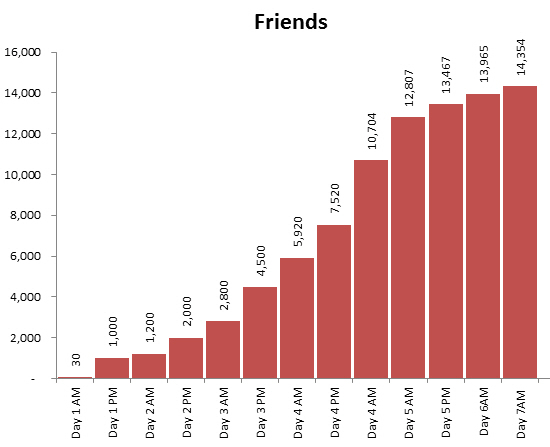
While the occasional commercial does popup on the group and there has been some sniping about deleted posts, the group has continued to grow as more people share their memories about Albuquerque.
Although many people know that four generations of my family has lived and worked in Albuquerque, many don’t know that I am an Albuquerque history buff and have a large collection of old photos, postcards and books. What better venue to share these? As I shared, others chimed in, and my “friends” counter increased by another 15% or so. (No, I don’t know all of them, but if they love Albuquerque history as much as I do, why would I tell them no?)
The group has received recent coverage from the local to TV new on KRQE as
As well as a front page article in the Albuquerque Journal:
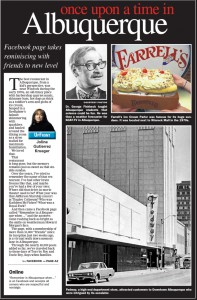
Is this a short term fad, or a long term trend?
For now, I would say long term trend. Although Facebook doesn’t share average time spent on any one group, a common expression from group members is how much fun they’ve had strolling down memory lane, and how much of their day has flown by.
Even after growth in the group stabilized at 15,000 (or so members), the media coverage has exposed the group to new people who are asking to join, creating that ever increasing spiral of increasing exposure, which is truly any marketers dream.
All in all, I’d label this a “sticky” success.
CCIM LIVE! – only 65 days!

Only 65 days are left until the next CCIM annnual meeting and what looks to be an amazing program – the list of speakers can be found here – http://live.ccim.com .
Book review: Best read for 2011: Aerotropolis

Aerotropolis, the way we’ll live next
Authors: Greg Lindsay & John D. Kasarda,
Publishing Info: Farrar, Straus and Giroux, Nonfiction, First edition published March 1st, 2011
As an international instructor for the CCIM institute I discovered that the book, Aerotropolis: the way we’ll live next dovetails nicely with what the just-in-time delivery model as a primary driver of demand for industrial space that we teach in the CCIM 102 course, I would highly recommend it to anyone in commercial real estate.
As a rabid book consumer, I will easily digest about 100+ books a year, and without a doubt, Aerotroplis: the way we’ll live next has become not only my favorite book of this year, but one of my all time favorite business books. It is one of those rare books that I thoroughly enjoyed reading that I found myself moderating how much I could read daily so I can push the ending of the book out as long as possible.
My favorite magazine, The Economist recently offered a glowing review of Aereotroplis, stating “In Aerotropolis, John Kasarda of the University of North Carolina and his co-author, Greg Lindsay, convincingly put the airport at the centre of modern urban life.”
The theme of the book is that successful cities of the future will be wrapped around successful airports and those cities that can’t adapt may be passed by. Its authors state the books hypothesis as an equation related to time “The aerotropolis is a time machine. Time is the ultimately finite commodity setting the exchange rates for all the choices we make.”
Author and reporter, Greg Lindsay, expands and expounds on the John Kasarda’s original idea that airports are the highways of the future. As a former Fast Company and Wired magazine reporter, Mr. Lindsay racks up the frequent flyer miles talking with civic leaders, CEO’s and company logicians as he interviews them on their home turf about the importance of air transit to their communities, companies or supply chains future.
As a fellow traveler, I reminisced about Mr. Lindsay’s travels to well-known airports like Chicago’s O’Hare, Atlanta’s Hartsfield, Amsterdam’s Schiphol, or even Hong Kong’s International, but I was green with envy over his trips to Dubai’s Al Maktoum International Airport or South Korea’s Incheon airport and adjoining master planned Songdo International Business District. One story of Mr. Lindsay tracking his gift of flowers from the Aalsmeer flower auction in Amsterdam to his mother’s front porch will endear Mr. Lindsay to the reader as an extremely diligent reporter and respectful son. Even more surprising than his few thousand mile journey for flowers was his mother’s reaction.
Some of the books concepts in the book are eye opening such as “The world’s urban population is poised to nearly double by 2050, adding another three billion people to places like Chongqing. We will build more cities (and slums) in the next forty years than we did in the first nine thousand years of civilized existence. The United Nations predicts the vast majority will flood cities in Africa and Asia, especially China.”
Or this quote about South Korea “South Korea’s capital is the archetypal twentieth-century megacity, doubling in size every decade or so since 1950 to twenty-four million inhabitants—the second most populous on earth after greater Tokyo.”
Or my favorite quote about a Chinese based manufacturer: “We had barely crossed the border before he opened his laptop and began walking me through the true costs of those shipments. He’d built a widget calculating every conceivable variable: the weight, volume, value, and quantity of the products in question; the lead times for sourcing and building them; time spent in transit; their shelf life; the spread between paying his vendors and being paid himself; the cost of money in the meantime; and the cost of returns. An entire calculus, in other words, underlies the pivotal question of our era: What is the price of speed? The widget’s answer: slow is more expensive. The only thing faster than a FedEx 777 Freighter out of Hong Kong is the velocity of money, and the last thing Casey wants to pay for are the days his parcels are stuck on a boat. Obsolescence sets in the moment they leave the factory. “Revenue evaporation,” he calls it. “Air freight is key,” he muttered while running the numbers. “We like to work with products that can go by air. We build them in Shenzhen, and they’re in New York two days later. Time is often our number one currency, and the dollar is second.” ”
And this quote summarized the breath taking feelings I experienced in my many visits to China for CCIM’s education program: “China is placing the single biggest bet on aviation of any country, ever. Even before the crisis and China’s subsequent stimulus, the central government announced as part of its Eleventh Five-Year Plan that it would build a hundred new airports by 2020, at a cost of $62 billion. The first forty were ready last year. The vast majority lie inland, hugging provincial capitals and secondary cities bigger than any in the States. Full-scale aerotropoli are planned for China’s western hubs, Chongqing and Chengdu, and its ancient capital. Besides airports, China laid as many miles of high-speed railroad track in the last five years as Europe did in the last two decades. The trains, in turn, are meant to keep people off the highways, to which China’s adding thirty thousand miles—enough to eclipse the American interstate highway system. China’s planners have internalized the lessons of America’s Eisenhower-era infrastructure boom, designing a world-class system for moving people and goods quickly, cheaply, and reliably across any distance, whether locally by highway, regionally by rail, or globally by air. The plan is to pick up and move large swaths of the Delta hundreds or even thousands of miles inland. There is nothing to stop them.
And this quote on where the future global cities will be “Finding another five hundred million passengers 7should be easy. China has anywhere between 125 and 150 cities with populations greater than a million. The United States has nine; Europe, thirty-six. When the first phase of China’s airport-building boom is complete, the number of hubs handling thirty million passengers annually—more than Boston’s Logan or Washington’s Dulles—will have risen from three to thirteen, all of which will be the host of aerotropoli. By the time they’re finished in 2020, 82 percent of the population—1.5 billion people—will live within a ninety-minute drive of an airport, nearly twice the number today.”
The book dovetails nicely with some of my other favorite business reads like Marc Levinson’s “The Box: How the Shipping Container Made the World Smaller and the World Economy Bigger” and Sasha Issenberg’s “The Sushi Economy: Globalization and the Making of a Modern Delicacy” both of which deal with just in time delivery and creating new markets.
Additional topics addressed in Aerotroplis include Peak Oil vs. Peak Food, globalization as a tool to pull the poor into the middle class vs. the carbon footprint of globalization via air travel, and the true cost of air travel in both economic and environmental terms.
If you enjoy Aerotroplis as much as I did, you might also read the June edition of Southwest Airline’s Spirit magazine as Mr. Lindsay has recently penned an article titled “Corporate Latter”. In this article he builds on the concepts discussed in Aerotroplis and discusses how technology has allowed us to shift away from being tied to an office, setting up shop at any location (http://www.spiritmag.com/click_this/article/the_corporate_latter/) . One economic development guru and author, Mark Lautman, is pushing this idea as the next evolution of cutting edge business recruitment – to scale down the benefits big corporations receive so communities can chase the highly mobile, quality of life comes first businessperson/consultant who eventually expands their business and hires staff. According to “When the Boomers Bail: A Community Economic Survival Guide”, this segment of our economic businesses is one of the fastest growing.
Not only would I highly recommend you read Aerotroplis, I would encourage you to purchase copies to share with your family, friends and clients as the conversations started from the concepts in the book are engaging, enlightening and very relevant to anyone with commercial real estate.
Todd Clarke CCIM
Aerotropolis can be purchased at: http://www.amazon.com/Aerotropolis-Way-Well-Live-Next/dp/0374100195/ref=sr_1_1?ie=UTF8&qid=1306590616&sr=8-1
Bernalillo County property tax update for apartments

If you own an apartment in Bernalillo County – the county assessor has obtained an extension on sending out notices of value. They will not be mailed out tomorrow, but should be sent out on 7/1/2011
Apartments become more expensive
Thanks to Melissa Montoya for covering the latest in apartment trends on KOAT TV 7.
Mother nature’s wrath
This photo shows a before and after of a neighborhood in Joplin, MO that was demolished from the recent the toronado storms.
The image on the top is from Google Map’s street view.
The image on the botton was taken by Aaron Fuhrman
While all American’s pray for the fine people in Joplin who have seen the mother nature first hand, it will be interesting to see how redevelopment occurs for this area.
Thanks to one of my favorite techblogs, Gizmodo, for sharing this (via DailyWhat).
Apartment Property Tax Lightning
Thanks to Channel 7, KOAT TV, for running this story on apartment property tax lightning.
First responses from 2011 Census of homeless – in ABQ they are finding housing.
 An update from our from the Albuquerque Heading Home homeless survey we helped with earlier this year.
An update from our from the Albuquerque Heading Home homeless survey we helped with earlier this year.
This article at 100k homes indicates that the first 15 homeless people from that survey have found housing – kudos to the Mayor and the folks at Albuquerque Heading Home for making this happen!
Property tax presentation for NM IREM Chapter
can be found here:
IREM-PropertyTaxUpdate-05052011-v2
thanks again to the IREM chapter for allowing me to provide them an update and overview of NM’s property tax system.
Bernalillo County property tax udpate for multifamily properties:
Earlier today, the Bernalillo County assessor announced that her office has sought and obtained approval to delay sending out notices of value for apartment buildings until June 15th, 2011.
This means the deadline to file a protest will be 30 days after that, or July 14th, 2011.
Single family and commercial property notice of values will be mailed out later this week with a deadline to file of May 30th, 2011.
As you know, last year was a tumultuous year for property taxes and apartments. Although our firm was able to obtain a significant reduction in apartment values, at the end of the day, this was done through strategy not a ruling from the formal tax board or the legal system. A legal ruling has yet to be made on whether apartments should have the same 3% cap as single family homes.
Those owners whose cases were not resolved are awaiting rulings from a handful of judges in district court. As was the case in previous years, it seems likely that one or two rulings will free up the balance of the pending litigation.
I would assume the assessor’s intent is to encourage one of the many judges to make a ruling prior to June 15th, 2011 deadline with the intent of using that ruling as direction for how to handle apartment values.
I believe this course of action is wise as it is going to take legislative, judicial or executive branch level action to correct the many property tax lightning issues.
Thanks,
Todd
Update to Taxessor app now v2.1
iTunes had just pushed our latest update on the Taxessor app – it will now load your 2010 property tax values allowing you to compare your potential value with your current property tax value.

It is property tax season
Notices of value are in the mail, or will soon be in the mail. If you need assitance this year with your property taxes – we offer a number of services for you, your firm and your client including:
We have an “app” for that
If you are trying to determining if your value is “fair”, consider downloading our 99 cent app from the iTunes store – http://itunes.apple.com/us/app/taxessor/id419811562?mt=8
Version 1 of the app takes the Bernalillo county resolved cases from 2010 and applies it to your property to help you determine what your value could have been. Because 2010 is a revaluation year, hopefully these values will go down. Version 2 of the app, which is awaiting approval of will automatically lookup your info from the county website and compare it to the potential value.
If you need some light reading, how about our 320 page textbook?
Now in its 5th edition, the text walks you through the property tax process including calculating your bill, determining if you should protest, and provides case studies of formal hearings and claim of refunds. Available in PDF format for $39 or printed for $49 at http://www.canteraconsultants.com/books
Property Tax Class – is on May 19th, 2011
This NMREC approved course is good for 8 CE credit hours and includes the above mentioned app and textbook and provides hands on training on how to handle your protest and covers our everything you need to “understand NM’s Property Tax System” – course registration for the 5/19/2011 course can be made at – http://www.canteraconsultants.com/registration
Representation
Finally, if that all sounds like a lot of work, you can hire our firm to represent you. We will analyze your property for free, and we charge you a small percentage of the savings only in the first year we obtain a reduction. Over the last 22 years, we’ve won 97% of our cases, representing over a billion dollars of commercial real estate with an average reduction of 23%. We charge 1/3 of what we save the client (i.e if we reduce their property tax bill by $10,000 then we charge $3,333) and we pay a 25% referral fee (on what we collect) to licensed agents, property managers or Realtors. If they choose to waive the referral fee, we can reduce our fee to 25% of the savings, and let the client know why they received a special discount.
If you have a property tax problem, look to us to be your solution.
Notice of value dates for property tax bills
A new form of advertising – your house
Thanks to Gizmodo.com for sharing from Adzookie.com which is a UK based company that is offering to pay homeowners mortgages if they let them paint their house with advertisements.
Although the Gizmodo posting indicates the advertisement is only in UK, when I went to their website it looks like they are up and running in the USA as well!
RFP De Anza motel – Albuquerque
The city of Albuquerque is looking for development teams to redevelop the historic De Anza Hotel. A full copy of the RFP can be found by clicking here and a copy of the market study we did for the City can be found here.
Of the many consulting assignments I’ve had the pleasure to work on, this was one that I probably learned the most. Our stakeholder sessions included some of the original employees who worked at the hotel in its hey day and remember the pink cadillac the owner used to pickup VIPS as well as the numerous political announcements made there.
Something very unique to the hotel is the priceless artwork embedded in the main common area space. The original developer, CG Wallace, hired native american’s to depict an medicine ceremony with life size Shalako dancers. To the best of historian’s knowledge, this artwork is the only piece like this that can be found off of a reservation.
Announcing our Social Networking scavenger hunt

Would you like to win a new iPad2 with red leather cover (notice the CCIM logo?)
Correctly answers the first 10 questions on our social networking quiz and give us some feedback on the next 4 questions at:
www.canteraconsultants.com/scavengerhunt
Good luck!
This marketing effort will be used to gauge the effectiveness of social networking in the marketing of the CCIM Technology and Social Networking course http://www.ccim.com/education/course/TSN/TSN0001 .
What is behind this door?
What is behind that door? You won’t believe it!
Beausoleil Architects via SFCurbed via The Daily What via Gizmodo.com




